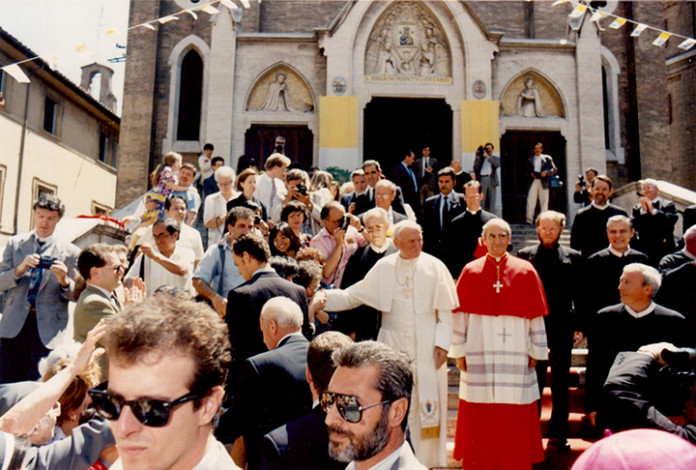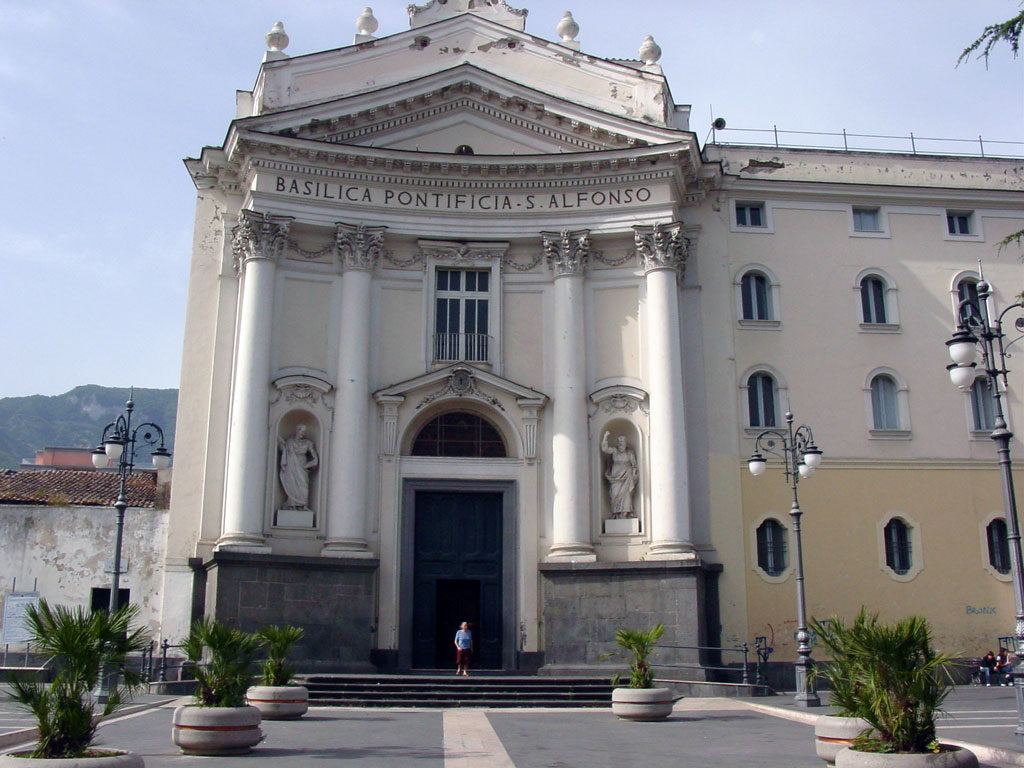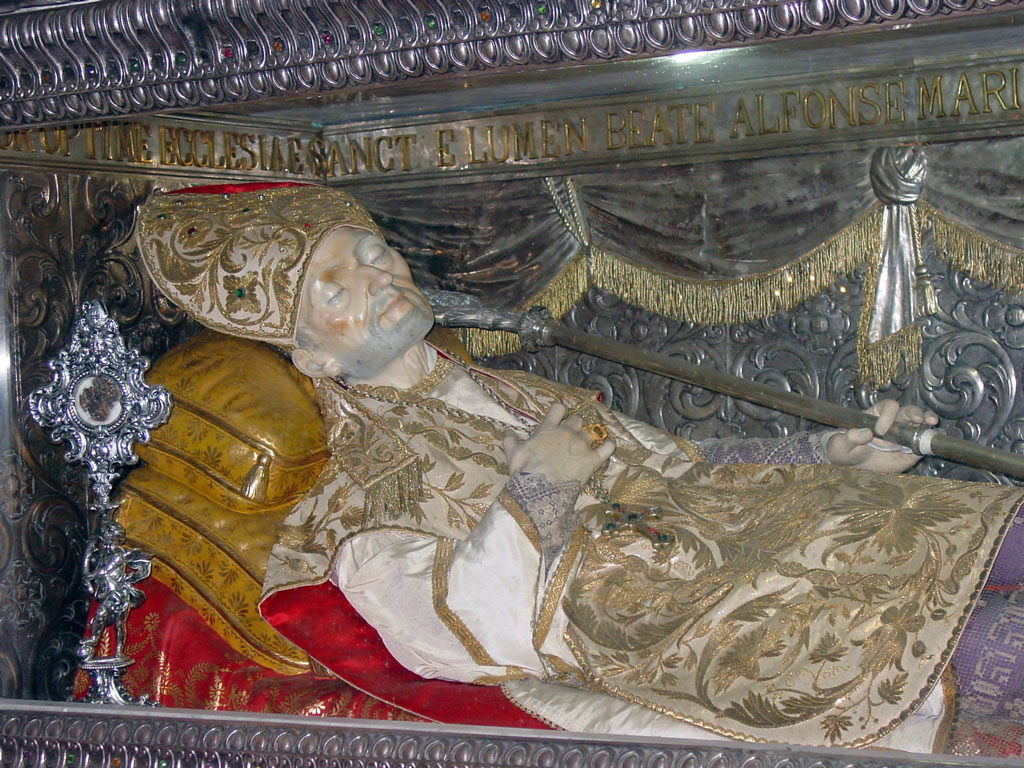On the centenary of his birthday, we recall several statements made by Pope John Paul II directly to the Congregation of the Most Holy Redeemer, in which he referred to the missionary activities of Redemptorists. We recall excerpts from two papal letters issued to mark the anniversary of the birth and death of the Congregation’s Founder, St. Alphonsus Liguori (1696-1787).
St. John Paul II wrote in his Apostolic Letter “Spiritus Domini” (August 1, 1987):
[…] The Apostolic Letter which I send you today on the bicentenary of the death of Saint Alphonsus expresses my convictions and feelings about a Saint who was a master of wisdom and a father of the faith.
Turning to the sons of Alphonsus spread throughout the world whom you worthily represent, I would like to give you the advice such a father would give his heritage, the Congregation he founded. It is the advice which Saint Alphonsus expressed in his life, in his pastoral work, and in his writings: he urges faithfulness to Christ and to his Gospel; faithfulness to the Church and her mission in the world, faithfulness to the people of our time; and faithfulness to the charism of your Institute.
You should never be deflected from this Alphonsian path in your life and ministry. You should always be men who follow the footsteps of the divine Redeemer, whose title and name you bear, according to the purpose of your Institute as it is given in the words of your Saint: “to follow the example of Jesus Christ, the Redeemer, by preaching the word of God to the poor, as he declared of himself: ‘He sent me to preach the Good News to the poor’”. […]
(see the Apostolic Letter “Spiritus Domini”, English translation available on ewtn.com)
In his Letter to Father Juan M. Lasso De La Vega, for the Third Centenary of the Birth of Saint Alphonsus Maria de Liguori (September 24, 1996), Pope John Paul II wrote:
[…] From the moment of his “conversion” in 1723, he [St. Alphonsus] lived without reserve the anxiety of evangelization, in the words of the Apostle Paul: “It is not a boast for me to preach the gospel; it is a duty for me: woe betide me if I do not preach the gospel” (1 Cor 9:16). This apostolic tension St. Alphonsus indicated as a fundamental characteristic and specific intent also of his Congregation. The vitality and dynamism of the Redemptorist Community, throughout its two centuries of history, is rooted in fidelity to missionary dynamism. Gennaro Maria Sarnelli (1702-1744), among others, was an eloquent witness to this, and I recently entered him in the number of the Blessed. It is in this perspective that the whole Congregation and individual religious must continue to walk: the need for the Gospel in the world today is even stronger.
It is necessary to proclaim forcefully the fullness of meaning that Christ opens to human life, the unshakeable foundation that he offers to values, the new hope that he introduces into our history. It is preaching which must be incarnated in the concrete challenges which humanity faces today and on which its very future depends. Only in this way can that civilization of love which is desired by all take shape.
The forms of this proclamation must be constantly renewed in the light of the possibilities and needs of different contexts. This renewal is made more urgent today by the speed of social and cultural evolution. […]
We must also make use of the other modern means by which the truth can be brought to the men and women of today. Among the striking aspects of St. Alfonso’s work is his commitment to the press […]. It is precisely from this example that today’s Redemptorists must be stimulated to ever more competent use of all means of social communication while remaining faithful to a simple, substantial, clear style.
The proclamation is authentic if, following the pedagogy of Christ, it is made concrete in the patient accompaniment of everyone’s conscience on the gradual journey towards truth and goodness. St Alphonsus strongly testifies that the frankness of preaching must be welcomed as a father and patience as a doctor – especially in the Sacrament of Reconciliation – so that every person may open himself to the action of Christ the Saviour. Fidelity to the Founder demands in a particular way from Redemptorists such capacity and commitment, indispensable for that “general mobilization of consciences and common ethical effort” which I do not tire of pointing out as solutions to even the most serious problems, such as those concerning life (John Paul II, Evangelium vitae, 95).
The deepening of moral theology is placed in this perspective. St Alphonsus did his utmost to ensure that in all strata of God’s people the separation between faith and life would be filled. The practicality of the Founder must continue to stimulate his children in their pastoral work, especially with regard to the renewal of the Sacrament of Reconciliation. […]
With s. Alphonsus it is necessary to reaffirm the centrality of Christ as the mystery of the Father’s mercy in all pastoral work. Redemptorists must never tire of proclaiming the “abundant redemptio”, that is, the infinite love with which God in Christ bends towards humanity, always beginning with those who most need to be healed and freed because they are most marked by the harmful consequences of sin. […]
That is why one must never tire of proclaiming divine mercy. The call of Saint Alphonsus remains relevant throughout pastoral ministry: “One must be persuaded that conversions made for the sole fear of divine punishment are of little duration… if the holy love of God does not enter into the heart, it will be difficult for him to persevere”. Therefore “the preacher’s main commitment” must be “to leave his hearers inflamed with holy love in every sermon” (Opere, vol. III, Turin, 1847, 288). From this conversion centered on love springs the constant tension for holiness. […]
The commitment to the promotion of a laity ever more aware of baptismal dignity and responsibility is essential for a Church that wants to respond to the challenges of the third millennium. Redemptorists have always been in deep communion with the people. Today on the part of the laity, especially the young, there are stronger demands for greater participation in the life and mission of consecrated persons. […]
(full text available in Italian: www.vatican.va)
We also present the memories of the Pope John Paul II’s visit to the Basilica of St Alphonsus in Pagani (November 12, 1990), and his visit to the Shrine of Our Mother of Perpetual Help in Rome (June 29, 1991).

On June 29, 1991, Pope John Paul II visited our Sant’Alfonso church at the Esquiline and celebrated the Eucharist in front of the Icon of Our Mother of Perpetual Help. In addition to the prayer in the Shrine, welcomed by a large number of faithful, the Holy Father conducted a truly familiar Pastoral Encounter with the Redemptorist community living in Via Merulana, Rome. The event was unforgettable. A great blessing for all of us connected to the Redemptorist Family and devotees of Our Mother of Perpetual Help.
In his homily, the Pope said: I greet affectionately all of you, dear Brothers and Sisters, who are partakers of this liturgical celebration. I would particularly like to thank the General of Redemptorists, Father Juan M. Lasso de la Vega, the General Counselors, the Religious of this Community, and through you all the communities of your Institute scattered throughout the world. I express my sincere appreciation for the work you do, faithful to the teachings of Saint Alphonso, the singer of the “Glories of Mary”. And thank you to Madonna for the opportunity that today has given me to meet you under his blessing.
125 years have passed since April 26, 1866, when Pope Pius IX entrusted your institution with the spread of worship to the Virgin of Perpetual Assistance. Since then, you have not ceased to love this Byzantine icon, coming from the East, and became a reference point for the faithful who come to pray in this temple.
As I wrote in my Apostolic Letter Duodecimum saeculum (1987), “Today’s believer, like yesterday, must be helped in prayer and in the spiritual life with the vision of works that seek to express the mystery without concealing it” (John Paul II, Duodecimum saeculum, 11) The icon recalls the mystery of divine motherhood, and while inviting to trust, it enhances the role that the Virgin plays in the life of every believer. Mary is the mother of hope and goodness; mother of mercy and grace. “If God wants to redeem mankind,” says St. Alfonso Maria de ‘Liguori, inspired by St. Bernard, “he has put all the redemption value in Mary’s hand because she gives it to her.” (Sant’Alfonso M. de ‘Liguori, Ascetic Works, Rome 1936, vol. VI, p.109).
In this icon, Mary relieves us of this value with the joyful announcement that the New Covenant is in you fully realized and by means of it is offered to all men. Jesus shakes his right hand, almost telling the first fruits of the redemption and witnessing the extraordinary way of cooperation of the Mother of God to the salvation of humanity. The Virgin’s eyes look to the people and irradiate on it the gift of divine grace (John Paul II).
To all of you, dear Brothers and Sisters, who are attending this sacred place, I say, take the inspiration from this celebration to renew your devotion to the Blessed Virgin of Perpetual Aid, which you can contemplate here. Do not forget that the Virgin occupies, after Christ, the highest and closest place to us “(Lumen Gentium, 56); and “is joined to all men in need of salvation” (ibid., 53).
Do not forget the words of St. Alphonsus Maria de ‘Liguori, who observes that “every good, every help, every grace that men have received and will receive from God in the future, everything has come and will be through intercession and through Mary “(Ascetic Works, idem, p. 110).
At the end of his homily, he prayed to the Holy Father: “Great sign of our hope, we call upon you! O Virgin of Perpetual Assistance, Holy Mother of the Redeemer; rescue your people, who will resuscitate; gives everyone the joy of walking toward the third millennium in the conscious and active solidarity with the poorest, announcing in a new and brave manner the Gospel of your Son, the foundation and culmination of every human coexistence, aspiring to true, just and true peace lasting. Like the Baby Jesus, whom we admire in this venerated icon, we too want to tighten your right. You do not lack power or goodness to help us in every need and need. The current one is your hour! Come, then, in our help, and be for all hope and hope, ‘Amen!’
After Mass: “I would like to say a very personal word about the mission Pope Pius IX entrusted to you. I remember that during the last war, during the Nazi occupation of Poland, I was a worker at a factory in Krakow. In the evening when I came home from the factory, I always stayed in a church, even that of the Redemptorists, who was on my way. In that church, there was an image of Our Lady of Perpetual Assistance. I stopped there many times and not only because that church was on my way, but also because I found that very beautiful image. I continued to visit that church even when I was appointed Bishop, and then also by Cardinal. I have also given you many sermons and I have administered the Sacrament of Confirmation several times. It is understood, therefore, how, coming to this place, it is as if you had made a journey in my past, in my youth. I rejoice in Divine Providence, I thank Madonna of Perpetual Relief, who has shown me Perpetual Relief in very difficult circumstances.
source: www.perpetuosoccorso.it
 On November 12, 1990, the city of Pagani saw Pope John Paul II as a pilgrim to the Basilica of St Alphonsus to venerate the relics and to launch a message of renewed hope. A few months later his appeal still echoed alive: “Do not give up! Proclaim justice and truth!”
On November 12, 1990, the city of Pagani saw Pope John Paul II as a pilgrim to the Basilica of St Alphonsus to venerate the relics and to launch a message of renewed hope. A few months later his appeal still echoed alive: “Do not give up! Proclaim justice and truth!”
read more in Italian: www.santalfonsoedintorni.it







